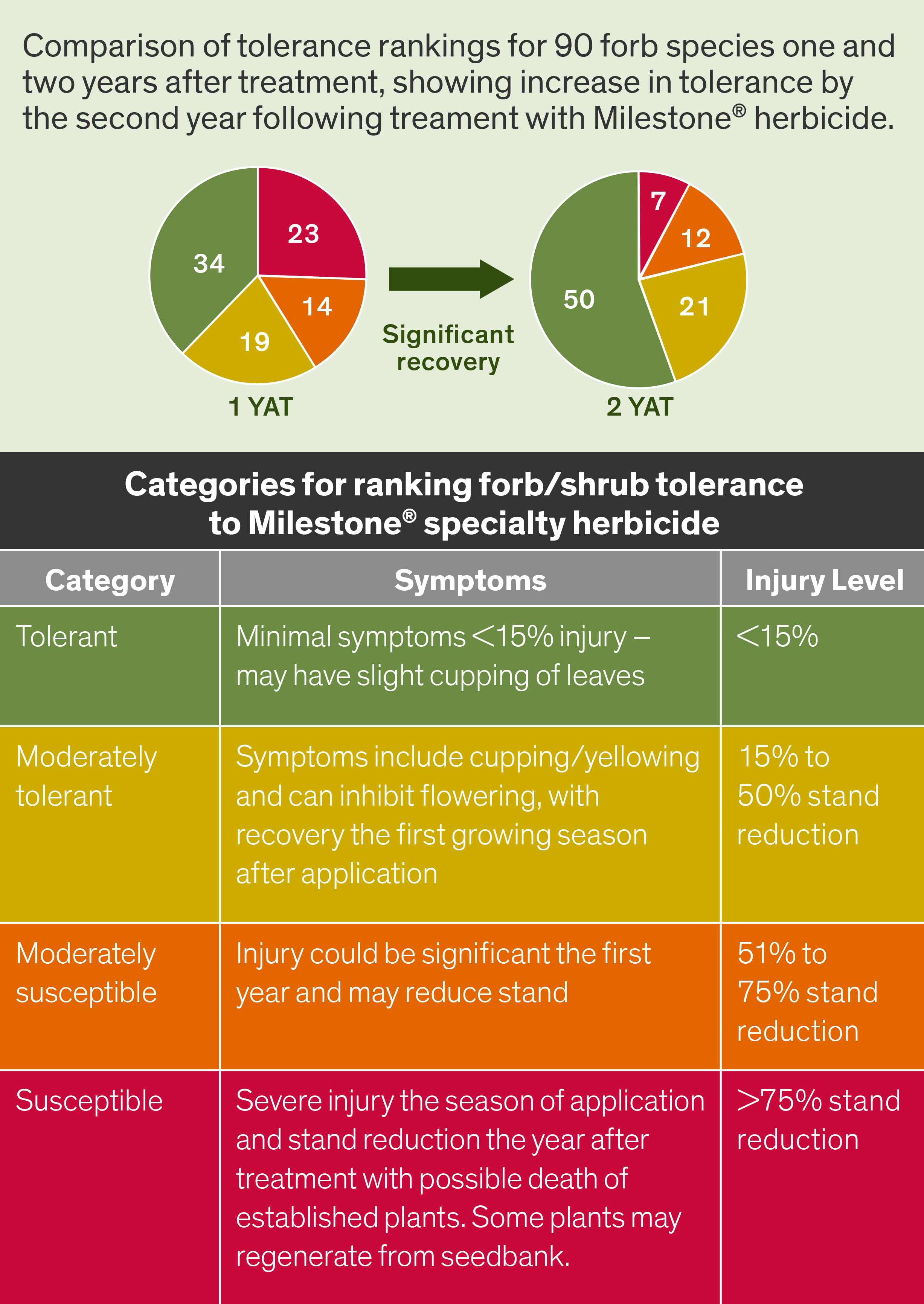Get selective when managing vegetation

Maintaining the millions of acres of rights-of-way in the United States can be done more sustainably and cost-effectively by using selective herbicides.
Maintaining the millions of acres of rights-of-way in the United States can be done more sustainably and cost-effectively by using selective herbicides.
There are millions of acres of utility and roadside rights-of-way in the United States dedicated to delivering power and connecting communities. While nonselective mechanical methods may be needed to reclaim or establish new rights-of-way, maintaining them can be done in a manner that is much more sustainable and aesthetically pleasing, while providing unique habitat for early succession plant and animal species and benefiting vegetation managers’ budgets.
“Mowing and trimming remain important parts of an integrated vegetation management program,” says Pat Burch, field scientist with Corteva Agriscience™. “But a mechanical approach by itself is very labor-intensive and costly. Mowing also encourages multiple resprouts on cut vegetation, causing weeds and brush to grow back denser and making future maintenance more difficult.”
A much better management plan — especially after desirable, low-growing plants become established — is to employ selectivity in both herbicides and treatment methods used when maintaining rights-of-way.
“Individual plant treatments such as low-volume basal or directed spot treatments are proven methods to target only undesirable vegetation,” says Travis Rogers, market development specialist with Corteva Agriscience. “However, even when applying selectively, if nonselective herbicides are used, it can result in the removal of desirable plant species, often referred to as the ‘cone of control.’ It leads to bare soil and sets back the plant succession process on rights-of-way.”
Rogers also adds that combining selective herbicides, such as Vastlan® and Milestone® specialty herbicides, with selective application techniques allows vegetation managers to achieve the highest degree of plant selectivity and diversity.
“For example, Vastlan controls many brush species and Milestone controls numerous broadleaf weeds while being tolerant to many warm- and cool-season grasses, such as forbs and shrubs,” Burch says. “Research shows maintaining low-growing forbs and grasses serves as a type of biological control and can lead to lower future maintenance costs. As desirable vegetation regains a foothold, there is less tall-growing woody plant pressure, making for more cost-effective and sustainable long-term management.”
Milestone is labeled to control numerous tough annual, biennial and perennial broadleaf weeds, including many noxious and invasive species, as well as certain woody plants. It has demonstrated selectivity to desirable grasses, and university studies show many native forbs and shrubs to also be tolerant of Milestone.
Studies showed that Milestone, when applied at the labeled rate of 5 to 7 fluid ounces per acre, exhibited excellent selectivity toward 90 native forb species and 19 desirable shrubs. Forbs saw an especially good response the second year after treatment, when 79 percent were classified as either “tolerant” or “moderately tolerant.” Of the 19 shrub species present, 74 percent were ranked either “tolerant” or “moderately tolerant” one year after treatment with Milestone® specialty herbicide.

This is important because, in addition to lowering weed pressure, the presence of native forbs and shrubs makes land attractive to wildlife — which is becoming industry best practice, especially in utility corridors.
“When utility rights-of-way are managed properly, pollinators and other wildlife species of high public interest are actually drawn to these areas of improved habitat,” Rogers says. “The use of selective herbicides helps create a diverse and healthy plant community, which should be the goal of every vegetation manager.”
™®Trademarks of Dow AgroSciences, DuPont or Pioneer, and their affiliated companies or their respective owners. When treating areas in and around roadside or utility rights-of-way that are or will be grazed, hayed or planted to forage, important label precautions apply regarding harvesting hay from treated sites, using manure from animals grazing on treated areas or rotating the treated area to sensitive crops. See the product label for details. State restrictions on the sale and use of Milestone apply. Consult the label before purchase or use for full details. Vastlan is not registered for sale or use in all states. Contact your state pesticide regulatory agency to determine if a product is registered for sale or use in your state. Always read and follow label directions.